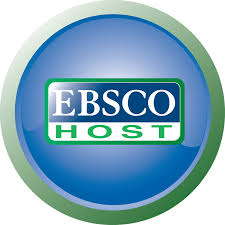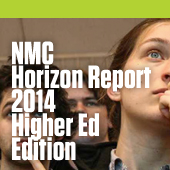CIRCL News
“It’s just four questions.” We’re grateful for the many ways you are already engaging with us: serving on program committees, participating in surveys, bringing your energy to meetings. Here’s another small, 30-minute-or-less way to get involved: write a perspective! We see perspectives as a way to create awareness of what we each care about and would like to do together. And its a great way to increase your own visibility and find new collaborators. In addition to the interviews we’ve done (e.g. Gordon Freeman below, and previous examples), we’ve made a simple “answer four questions” tool for you to write your own perspective. Make your voice heard–write a perspective today.
NSF Cyberlearning Webinar
As part of its technical support and brokering activities, CIRCL facilitated a webinar on the latest NSF Cyberlearning Transforming Education solicitation on February 18th, 2014. Three hundred and twenty nine participants joined the webinar and presenters included NSF’s program leads Dr. Janet Kolodner and Dr. Christopher Hoadley. Following an in-depth review of the solicitation, the presenters answered questions from participants on the webinar as well as those that were submitted ahead of time. An archived recording of the webinar and webinar related materials, including a Q&A document, are available on the CIRCL web site. CIRCL brokering services are available to all members of the Cyberlearning community who need assistance identifying colleagues with specific disciplinary or other expertise to partner on on-going work or future proposals. For assistance, please contact CIRCL.
2014 Cyberlearning Summit: Updated Information
The 2014 Cyberlearning Summit is just a few months away! It will take place in Madison, Wisconsin on June 9 and 10th, before the Games Learning Society meeting. Thanks to everyone who applied to attend. The event is currently waitlisted, so if you are interested in attending but did not previously apply to attend, please email us at circl-summit@sri.com to be added to the waiting list.
Announced at the end of March, fifteen nominated speakers will be selected to give talks to share their research and big ideas in learning. The program also includes two plenary panels, posters, and technology demonstrations. Visit the Summit page to watch reflections by participants at the 2012 Summit.
Featured Perspective: Meet Gordon Freedman
Gordon Freedman is an executive in the education, education policy, and technology-in-education field.
What motivates you as a Cyberlearning Innovator?
If we are preparing people to go into the workplace and to be innovators, then we need to prepare learners to be active users of today’s powerful social media and computational tools. Why would you put motor oil into your Prius? We live in an era where we want to remove the barriers between everybody and the knowledge that is available in the world. From an operational diagram, we want the learners to get to a certain place — so why don’t we have them start in the place? I work on innovations to enable kids to be learning in environments with all the richness of the worlds they will be living in.
Why did you invent a new organization and what does your organization do?
When I worked with Blackboard, I travelled to 18 countries and visited their universities and ministries of education. What I could not find was an organization analogous to our national laboratories. Many organizations optimize what happens in schools, and yet optimization within the school structure is not longer going to be enough to reach our societal goals. So we created the National Laboratory for Educational Transformation to be a national lab that was completely focused on transformation, not just optimization. I was inspired by conversations with our partners at Los Alamos. They are willing to strip education down to first principles — which is hard to do out their in schools or in companies.
We’re in the midst of a 100 year transformation from an industrial to an innovation-oriented education system. At the dawn of the industrial age, we equalized opportunity to learn by creating universal access to schools. But in today’s innovation age, the basic unit of opportunity to learn must change to individual students. I founded NLET to facilitate partnership and collaboration on the 100 year transformation.
What could Cyberlearning be doing now to make a difference?
Cyberlearning is about bringing people together around important problems — and NLET has excelled at bringing stakeholders from different sectors together. But what should they do together? A really good set of practices would be around jointly deconstructing “learning progressions” when there are no preconceptions about grades, subjects, a daily bell schedule, or all the other given rituals and boundaries of the industrial age school. For example, we can help students with writing and authoring across the school day, inside and outside of school, and irrespective of what grades they are in. Cyberlearning innovators could work together on the important problems of learning that transcend the taken-for-granted structures of school.
Which researchers would you like to reach out to?
I would really like to hear from researchers who are thinking about cross-cutting educational process — those aspects of learning that develop longitudinally and across settings and topics. I value the ability of researchers to work through big problems with intellectual rigor, with attention to the real needs of learners, and with an eye to achieving deep insights. We’d invite dialogues with researchers around systems that could be “linear accelerators” for learning — big projects that could enable the many smaller, more detailed experiments which are needed so that as we create the 100-year transformation, we do it with intellectual integrity.
Perspectives on the Future of Cyberlearning
Why is cyberlearning important? What is the potential for cyberlearning? Where do you see cyberlearning in 5 years? What are some of the obstacles to cyberlearning? At the 2012 Cyberlearning Summit, several participants volunteered to be interviewed and videotaped as they responded to such questions. Watch members of the cyberlearning community share their perspectives and envision the future of cyberlearning.
Job Announcements
The Institute of Play is seeking a Director of Assessment to develop and bring to life key educational measurement and learning considerations in GlassLab’s products.
Opportunities: CIRCL Grad Fellows, HICSS-48, ILE Special Issue, Young Scholars Competition
CIRCL is seeking graduate students to become more involved as CIRCL graduate fellows. If you have graduate students who are doing cyberlearning work, please have them sign up for the CIRCL newsletter and contact CIRCL to learn more about how to become a graduate fellow. A graduate fellow will have opportunities to work with CIRCL, and active fellows will have opportunities to receive travel funding to CIRCL meetings such as the upcoming Cyberlearning Summit or the Synthesis and Envisioning meeting to be held in 2015.
The next Hawaii International Conference on System Sciences (HICSS) will be held January 5-8, 2015, in Kauai, HI. Papers are due June 15, 2014. Contact Dan Suthers for more information about the Social Media & Learning Minitrack. This minitrack will bring together state of the art research that furthers social theories of learning (such as networked learning, learning analytics, collaborative learning, viral learning, and social capital) situated in formal, non-formal and informal learning settings such as schools, higher education, organizations, workplace, leisure, communities and crowds.
Contributions are being solicited for a special issue of Interactive Learning Environments on “Learner-Generated Designs in Participatory Culture’. Contributions that focus on digital media and an emergent culture of participatory learning that privileges the learners’ perspectives are welcomed. The 500-word synopses are due on April 30, 2014, and the deadline for submission of full manuscripts is July 11, 2014.
The 2014 ECT Foundation Young Scholars Competition is now taking applications.
This award focuses on outstanding work of young scholars by way of a paper presenting a theoretical construct or a paper guiding research and / or development in educational technology. The due date for submission is April 1st, 2014.
Resource and Tech Corner: EBSCO, DIA2, NMC Horizon Report
The EBSCO Education Research Complete database is now available to users of InformalScience.org. The database makes available abstracts for more than 2,400 journals and full-text access for over 1,000 journals. The database also includes full text for hundreds of books and monographs, and full text for numerous education-related conference papers. Topics include education, social science research and evaluation with coverage across many different informal STEM education sectors, such as science museums, aquariums, zoos and botanical gardens, nature centers, mass media, and more. Learn more about this new data service that complements the more than 8,200 Informal STEM Learning resources available via the Informal Commons collection.
Deep Insights Anytime, Anywhere (DIA2) is a knowledge mining and visualization platform for non-experts in data mining and visualization. Funded by NSF, the goal of the project is to create a central resource for the community of researchers, educators, and learners who are attempting to transform undergraduate education in STEM. Using the DIA2 alpha platform, you can browse funding across NSF directorates, divisions, and programs; view concepts and related awards; explore PI/CoPIs and NSF program officers, program profiles, and NSF-funded institutions; and search the text of proposal titles and abstracts. DIA2 offers intuitive navigation that allows users to dive into several levels of data displayed in a variety of representations (e.g., interactive lists, tables, bar graphs, geographical maps, social network diagrams), and allows users to save (and soon, share) dashboards to organize their queries and results.
The NMC Horizon Report > 2014 Higher Education Edition describes 6 higher-ed trends and predicts their timetable for adoption: flipped classroom and learning analytics (1-2 years), 3D printing and games (3-4 years), and virtual assistants and the “quantified self” (4-5 years). New this year in the Horizons report series: how the trends and “wicked challenges” are accelerating and impeding the adoption of educational technology, and their implications for policy, leadership and practice.
Share Your News
Have some news (project highlights, job opportunities, RFPs, calls, etc.) that you want to share? Contact CIRCL.
CIRCL is supported by NSF grant IIS-1233722 (CRC: Center for Innovative Research on Cyberlearning (CIRCL). Any opinions, findings, and conclusions or recommendations expressed in this material are those of the author(s) and do not necessarily reflect the views of the National Science Foundation.








